Top 10 Competitor Monitoring Strategies to Boost Your Business
Discover effective competitor monitoring strategies to gain a competitive edge in your industry. Stay informed and take action—read the article now!
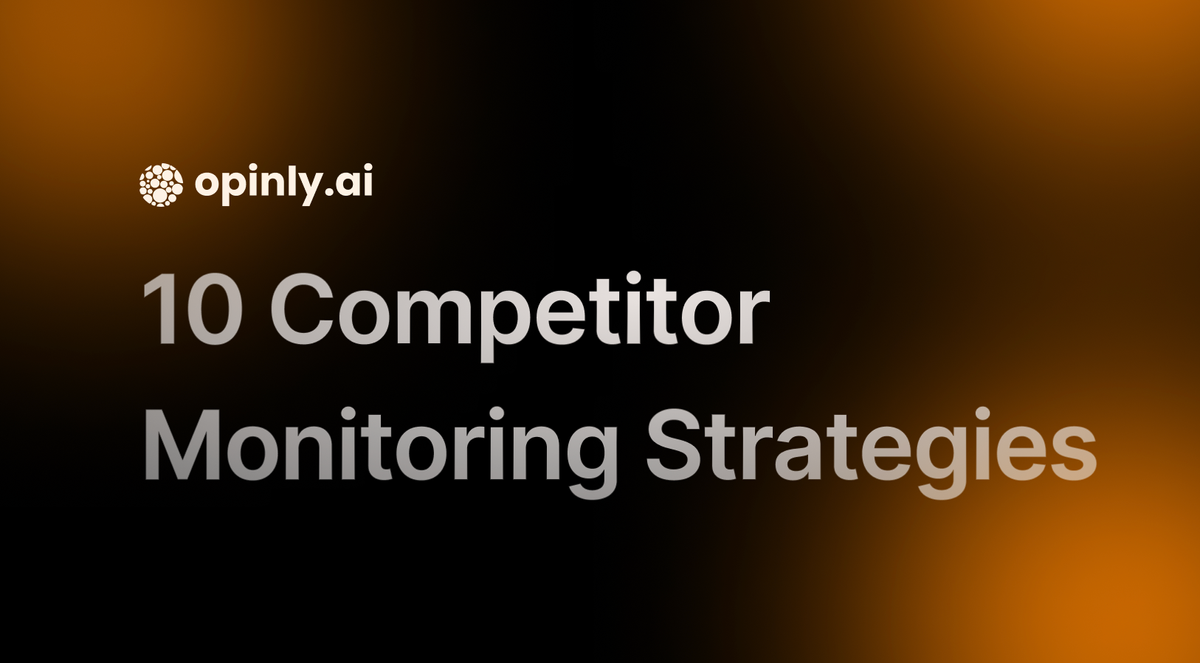
Wondering how to stay ahead of your competitors? Competitor monitoring provides the insights you need to understand their moves and refine your strategy. This guide will equip you with effective strategies and tools to track and analyze your competition, helping you make informed decisions to boost your business.
Key Takeaways
- Competitor monitoring is essential for identifying market gaps and adapting strategies to maintain a competitive edge.
- Utilizing the right tools and techniques for competitor analysis can significantly enhance marketing efforts and uncover new opportunities.
- Regularly updating insights and sharing them across teams enables informed decision-making and a proactive approach to competition.
Understanding Competitor Monitoring

Competitive monitoring offers valuable insights that drive business adaptation and growth. Observing competitors’ actions reveals advantages and potential market gaps. This process is not just about keeping an eye on your rivals but understanding the competitive landscape to make informed strategic decisions.
Real-time competitor monitoring enables quick adaptation to market changes. Customer feedback analysis reveals competitors’ market perception and operational weaknesses, which can be leveraged to improve your most relevant competitive insights.
Staying vigilant helps businesses maintain a competitive edge and foster continuous growth.
Key Benefits of Competitor Monitoring
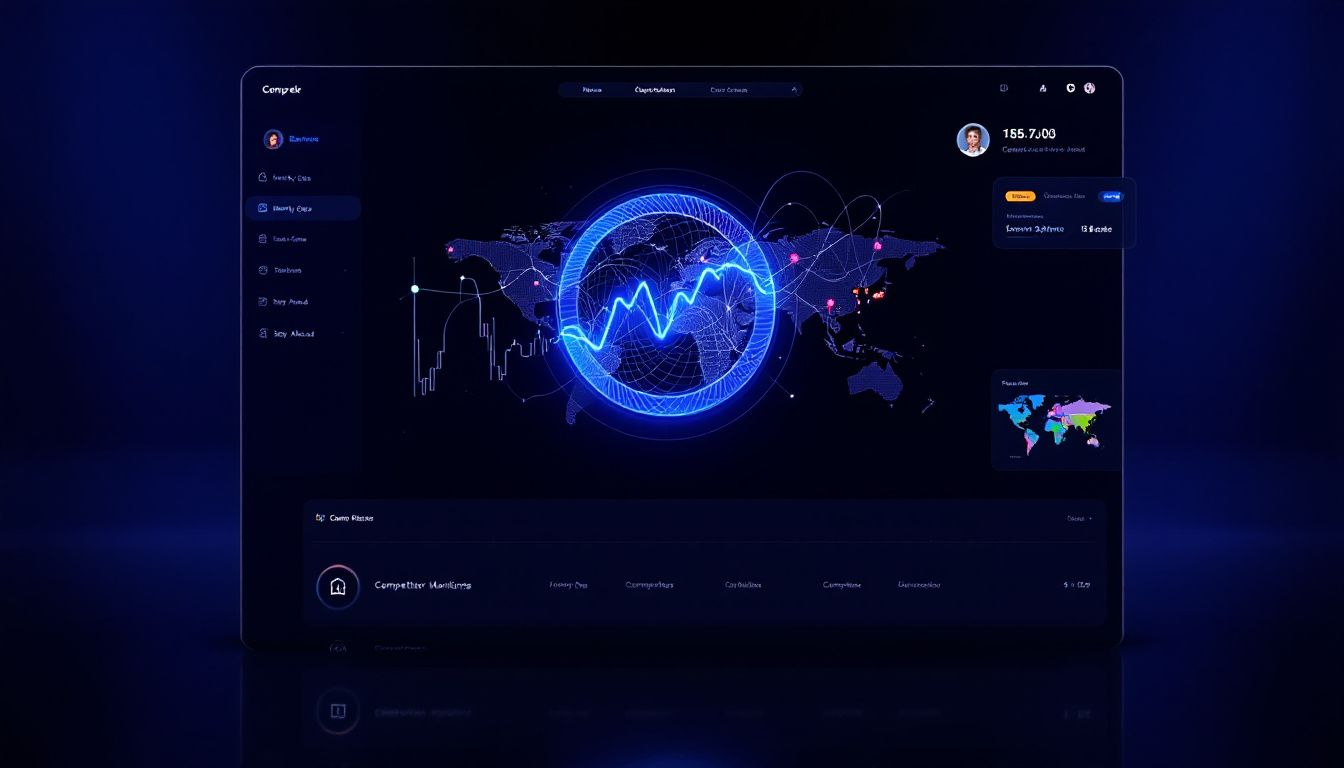
Competitor monitoring keeps businesses competitive by providing insights into rivals’ actions. This method improves business performance by assessing industry standing and competitive advantages. Tracking competitors aids in making informed decisions, responding to threats and opportunities, and staying ahead in the market.
Competitor monitoring data reveals marketing effectiveness and aids in strategy refinement. The ultimate goal of competitive analysis is to enhance marketing strategy and decision-making.
Using competitor monitoring tools and competitor analysis tools, businesses can refine strategies and make informed decisions.
Identifying Market Opportunities
Tracking competitors allows businesses to uncover neglected niche markets that could be targeted. Monitoring competitor weaknesses reveals potential areas for innovation within your own business strategy. Weaknesses identified through sentiment analysis can indicate potential competitive advantages.
Analyzing social media mentions and using tools like Exploding Topics helps identify industry leaders and trends.
Enhancing Marketing Campaigns
Competitor monitoring reveals unexploited opportunities and provides unique angles for new marketing campaigns. Analyzing competitors’ content strategies through tools like Ahrefs and Similarweb provides insights into traffic and content performance, which can help refine your own content strategy.
Media monitoring reveals what works well with customers, informing necessary campaign adjustments. Analyzing metrics like posting frequency, promotional versus non-promotional posts, and top-performing keywords can enhance your marketing strategies.
Avoiding Common Pitfalls
Competitor monitoring helps businesses avoid ineffective strategies by learning from competitors’ mistakes. Regular competitive analysis should be integral to your marketing strategy for continuous adaptation and pitfall avoidance. Investigating competitors’ previous results with similar ideas helps avoid repeating mistakes.
Job postings reveal competitors’ investment areas, geographic expansion, required skills, and departmental growth. Backlinks provide insights into a competitor’s PR, content, and partnership strategies, revealing overall strategy effectiveness.
Manual Methods for Monitoring Competitors
Manual competitor monitoring involves practical, cost-effective techniques that don’t require extensive resources. These methods offer a hands-on approach to gather relevant competitive insights. Keyword research, online reviews, and Google Alerts setup are some of the manual techniques that can yield valuable information about competitors.
Keyword research is crucial for understanding the competitive landscape and identifying competitors’ target keywords. Online review analysis provides insights into competitors’ strengths and weaknesses, influencing your strategies.
Google Alerts help businesses track competitors’ mentions online and stay informed about their activities. Saved LinkedIn searches can monitor job postings and new hires at competitors, revealing organizational changes.
Keyword Research
Search rankings serve as a direct line to potential customers, indicating who has an advantage in capturing leads. Keyword research tools can reveal competitors’ top-performing keywords and their respective search rankings.
Tracking key transactional and informational keywords is essential for effective competitor monitoring. The keyword list from the Keyword Gap tool can be downloaded or sent to Keyword Strategy Builder for further analysis.
Online Reviews and Forums
Monitoring customer feedback on platforms like forums and review sites can reveal competitors’ strengths and weaknesses, guiding your own strategies. Engaging with online reviews reveals customer sentiment about competitors, crucial for improving offerings.
Forums reveal emerging trends and issues in the industry, reflecting customer discussions about competitors. Competitor analysis should examine customer complaints in reviews to identify service or product gaps.
Analyzing reviews uncovers opportunities for differentiation in marketing strategies.
Google Alerts Setup
Set alerts for competitors’ names and relevant industry-specific terms for effective monitoring. Google Alerts effectively monitors competitors’ online mentions and tracks their activities. Creating Google Alerts is straightforward; set up alerts using your email for notifications.
Google Alerts keep businesses informed about competitors’ developments, enhancing strategic decisions.
Leveraging Competitor Monitoring Tools
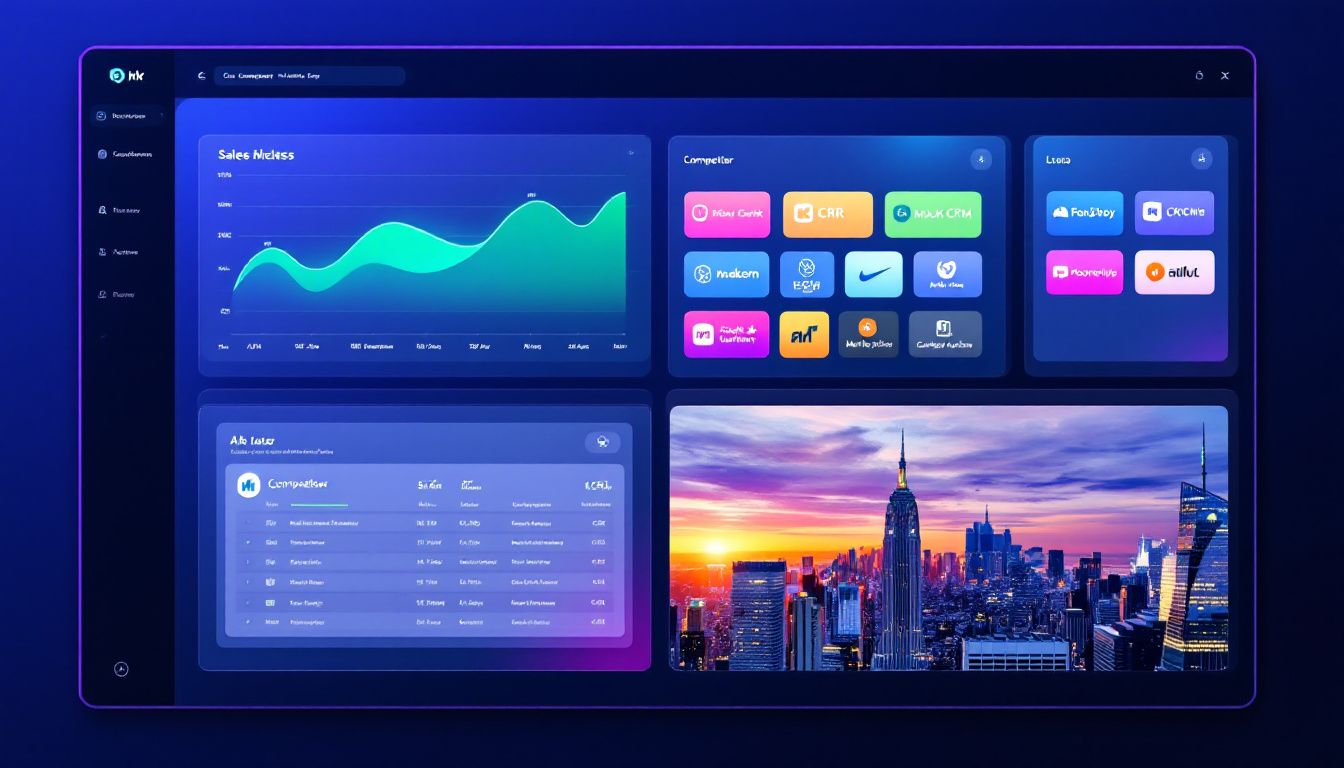
Social media monitoring tools, competitor tracking software, and competitor intelligence software assist in competitor monitoring. These tools cover competitive analysis areas like SEO, paid search, email marketing, and social media marketing. Insights from competitor monitoring can effectively enhance marketing strategies. These tools help businesses monitor their own and competitors’ brands to gain vital insights.
Select competitor monitoring tools based on setup ease, expert support, user-friendly dashboards, data accessibility, and software integration. These tools track competitors’ strategies, customer intent, and industry trends.
Keyword research tools like Spyfu, Ahrefs, and Accuranker analyze competitors’ search rankings. The Organic Research Tool identifies keywords your competition ranks for, informing your keyword strategy.
Google Alerts effectively track competitors’ online presence and backlinks through a simple google search. Maximize Google Alerts by creating alerts for specific competitor names and additional terms. Automated media monitoring software scans media for brand and competitor mentions, keeping you updated.
Competitor revenue analytics highlight focus areas based on real revenue impact, enhancing monitoring efforts.
Social Media Monitoring Tools
Social media analysis tools evaluate competitors’ engagement metrics across social media platforms. These tools track metrics like video views, engagement rates, and audience demographics. Monitoring competitors’ social media ads reveals their paid strategies, messaging, and audience positioning.
It highlights effective customer engagement tactics worth emulating. Analyzing competitor activities reveals successful content strategies to adopt. This monitoring reveals effective content types and strategy effectiveness.
Sprout Social helps analyze competitor performance on social media. Certain tools analyze competitors’ social media strategies on individual channels. HypeAuditor analyzes influencer marketing campaigns for competitive insights.
Phlanx emphasizes engagement over follower counts in its calculations. Prioritize a data-driven approach focusing on metrics when analyzing competitors.
SEO and Backlink Analysis Tools
SpyFu offers SEO and paid search recommendations, making it valuable for competitor analysis. Semrush effectively analyzes competitors’ search rankings and domains. STAT tracks unlimited competitors and keywords, offering comprehensive SEO insights.
Conductor assesses site strength in SERPs and provides detailed competitor SEO analysis. Ahrefs and UberSuggest effectively monitor competitors’ backlinks. SEMRush offers backlinks monitoring, ranking changes analysis, and traffic comparison for SEO analysis.
Tools like SEMrush and Ahrefs track competitors’ backlinks to assess online authority. Evaluate backlink opportunities using traffic and Authority Score to strengthen SEO strategy. Backlink analysis reveals content patterns that attract links, offering actionable insights for your content strategy.
Assessing competitors’ top organic keywords and backlinks identifies effective strategies to enhance SEO.
Competitive Intelligence Software
AI-driven tools like Crayon and Kompyte automate competitor analysis insights and serve as competitive analysis tools. Kompyte offers side-by-side comparison reports, real-time updates, and AI-generated battle cards.
Crayon provides automatically compiled competitor updates and customizable reports, enhancing team collaboration. iSpionage monitors competitors’ campaigns with email alerts for changes.
AI tools automate monitoring, enabling quick adaptation to competitor changes. Kompyte’s AI automates analysis tasks, generating real-time insights to stay ahead of competitors.
Monitoring Competitors' Digital Marketing Strategies
Competitive monitoring identifies market trends, enabling timely adaptation to customer demands. Tracking website traffic provides insights into competitors’ marketing effectiveness and visitor engagement. Competitor monitoring tools reveal website performance, user engagement levels, and traffic origins. Tracking influencer engagement uncovers effective marketing strategies and partnership opportunities. Tracking influencer partnerships reveals effective audience engagement strategies used by competitors.
Monitoring competitors’ digital marketing strategies involves analyzing various aspects such as PPC campaigns, email marketing insights, and video advertising trends. Understanding competitors’ strategies helps optimize your marketing efforts to stay competitive.
Analyzing PPC Campaigns
The Advertising Research tool analyzes paid search ads, providing crucial strategic insights. Click on the ‘Ads Copies’ tab to view a competitor’s ad copies and understand their messaging. Locate competitors’ landing pages under the ‘Pages’ tab to see where their ads lead.
Effectively utilizing these insights optimizes your PPC strategies. PPC campaign analysis is essential for understanding competitors’ paid search strategies.
Email Marketing Insights
MailCharts analyzes email sequences and customer nurturing by reviewing transactional and triggered emails. Owletter captures competitors’ emails, providing insights on sending frequency and timing for email marketing analysis. SendView tracks competitors’ email marketing activities, revealing their tech stack and common send times. Sudden changes in email frequency or messaging may indicate a strategic shift in a competitor’s email marketing.
MailCharts provides features for searching and filtering email types, allowing businesses to comment on examples and create competitor groups for analysis. MailCharts has a comprehensive database filled with years of email data. This allows businesses to examine how email marketing strategies have evolved over time.
Analyzing user engagement metrics can help companies understand how effectively competitors retain visitors and convert them into customers. SendView helps track competitors’ email marketing tactics and creates trend reports that allow for tracking changes over time.
Video Advertising Trends
Analyzing competitors’ video marketing can help identify successful content styles and themes in visual advertising. VidIQ specializes in monitoring competitors’ YouTube channel metrics and performance. Monitoring competitors’ video marketing can reveal insights that help your business stay ahead in the visual content game.
Keeping track of competitors’ strategies enables businesses to refine their own video marketing approaches and engage more effectively with their audience.
Tracking Competitor Prices and Product Developments
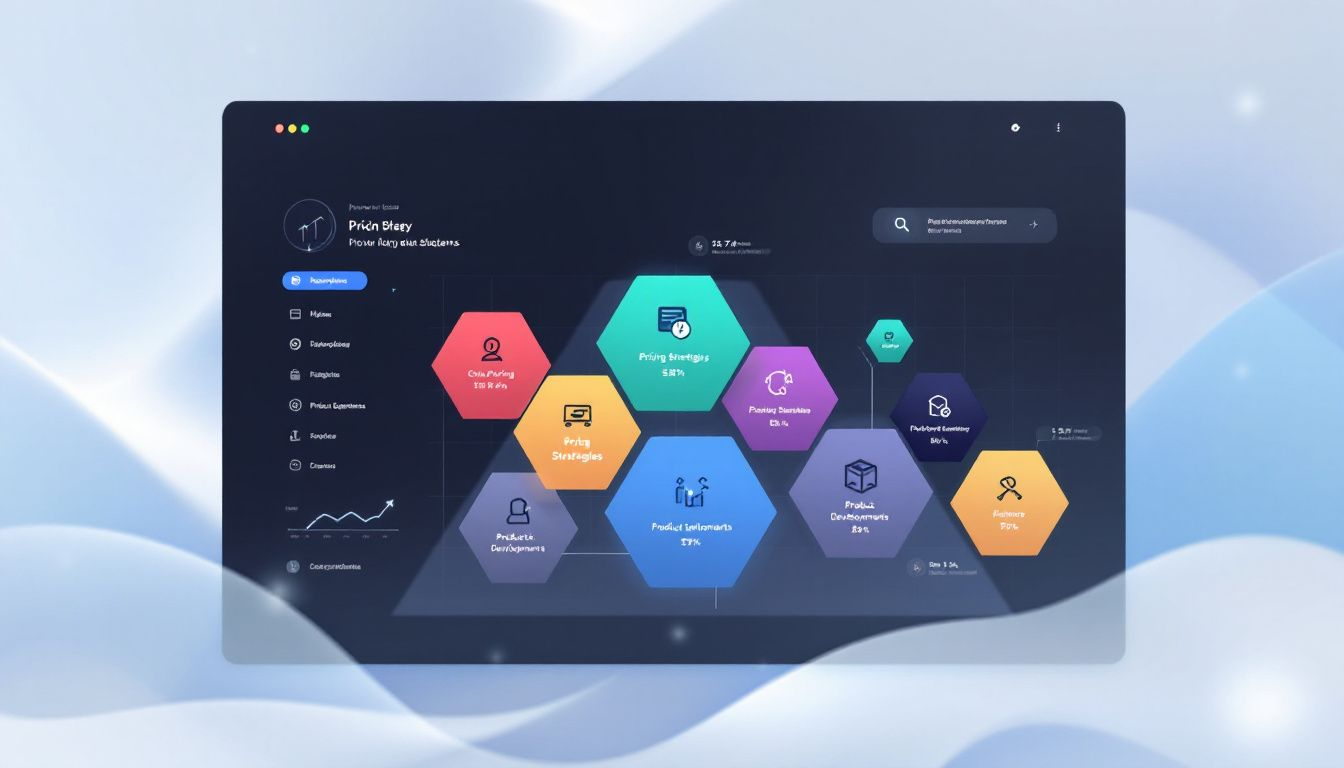
Monitoring competitor prices helps businesses stay aligned with market conditions, avoiding stagnant pricing. Real-time tracking of competitor price enables faster adjustments to pricing strategies, enhancing competitiveness. Continuous updates to competitor data help businesses protect and increase revenue. By staying informed about competitors’ pricing models and product developments, businesses can adapt their strategies to maintain a competitive edge.
Tracking competitor prices and product developments involves using dedicated tools and techniques to gather insights. This section will cover price monitoring tools and product launch analysis, providing a comprehensive approach to staying ahead of competitors.
Price Monitoring Tools
Dedicated price monitoring tools automate tracking and identify pricing patterns, allowing businesses to adjust their pricing strategies based on competitor behavior. Examples of popular price monitoring tools include Prisync, Competitor Monitor, and Intelligence Node.
Price monitoring tools can analyze dynamic pricing models and identify price changes on competitors’ websites.
Product Launch Analysis
Monitoring competitors for new product launches allows businesses to adapt their offerings to meet market demand. Job listings indicate areas of growth and provide insights into competitors’ future product plans. Subscribing to competitors’ newsletters and emails offers insights on new product launches and marketing campaigns.
Companies that introduce new products experience significant growth. They grow 60% faster than those that do not innovate. Approximately 95% of products fail after launch, highlighting the risks involved.
Monitoring Competitors' Website Traffic and Engagement
Similarweb provides insights into website traffic sources and audience demographics, enabling you to benchmark your performance against competitors. The competitors tab in Organic Research can give you a list of competing websites, the number of keywords they rank for, and the traffic they generate. SEO tools can identify competing websites and their organic search performance through keyword tracking, which is essential for understanding their visibility in search results. Monitoring competitors’ website traffic and engagement metrics is vital for understanding their market position and optimizing your own business strategies. Utilizing these insights helps you make informed decisions about your own marketing strategies and identify areas for improvement.
By leveraging these tools and techniques, businesses can gain a comprehensive understanding of competitors’ website performance and user engagement levels. This information is crucial for refining your own online strategies and ensuring continuous growth.
Traffic Analytics Tools
Traffic analytics tools provide information to analyze competitors’ traffic and identify new traffic sources. These tools help uncover top traffic sources and determine the most popular content driving visits. To analyze competitors’ domains, you can enter a maximum of five domains into the tool. Then, just click on ‘Analyze’ to proceed. Metrics such as unique visitors, average visit duration, and bounce rate can be compared using traffic analytics tools.
Tools like Semrush provide access to traffic analytics reports, including visits and bounce rates, based on clickstream data. Similarweb allows users to analyze traffic sources and audience metrics, offering insights into geographic visitor origins.
Traffic analytics tools allow businesses to identify both organic and paid traffic sources that drive visits to competitors’ sites. Some traffic analytics platforms allow users to input competitor URLs to gather comparative data on visitor demographics and traffic trends. Understanding competitors’ traffic sources helps businesses refine their marketing strategies and identify new opportunities.
User Engagement Metrics
Monitoring metrics such as pages per visit and average visit duration helps in understanding how users interact with competitors’ websites. Metrics such as average session duration and page views per visit offer insights into the quality of user experience on competitors’ websites.
Analyzing user engagement metrics on competitors’ websites is crucial for understanding customer behavior and preferences. By analyzing these engagement metrics, businesses can refine their own online strategies to enhance user experience.
Social Media Activity and Brand Mentions
It is important for businesses to monitor competitors’ social media activity to avoid losing market share and revenue. Brand24 is used for tracking brand mentions across various sources. Sociality.io offers tracking for competitors’ social media engagement and post frequency. Social listening tools can analyze content relevant to keywords, brands, and mentions on social media. Monitoring competitors’ social media can provide insights into their strategies and customer responses. Platforms like Reddit, Discord servers, and industry forums should be monitored for competitor brand mentions.
By keeping a close eye on social media activity and brand mentions, businesses can stay informed about competitors’ strategies and customer sentiment. This information is valuable for refining your own social media strategies and maintaining a competitive edge.
Sentiment Analysis
Sentiment analysis tools provide insights into customer happiness with competitors, helping to gauge overall brand perception. Sentiment analysis tools can quantify public opinion, allowing brands to strategize improvements based on competitor feedback. Repeated complaints from user conversations about competitors indicate areas for improvement that businesses should focus on.
Tools like Brand24 can filter negative mentions, providing clearer insights into potential issues in a competitor’s public perception. Meltwater assists in sentiment analysis by measuring customer sentiment in context, offering deeper insights into public opinion.
Influencer Collaborations
Tracking competitors’ influencer marketing efforts allows businesses to discover successful engagement strategies that resonate with target audiences. Utilize specialized influencer monitoring tools to track competitors’ collaborative efforts with influencers and their impact on brand awareness.
Analyzing engagement metrics like likes, shares, and comments on influencer posts can reveal how effectively competitors are reaching and interacting with their audience. Identify potential influencers by analyzing competitors’ collaborations and evaluating their effectiveness in your niche market.
Monitoring the results of competitors’ influencer campaigns helps businesses adapt successful strategies and stay competitive in the market.
Competitor Monitoring Best Practices
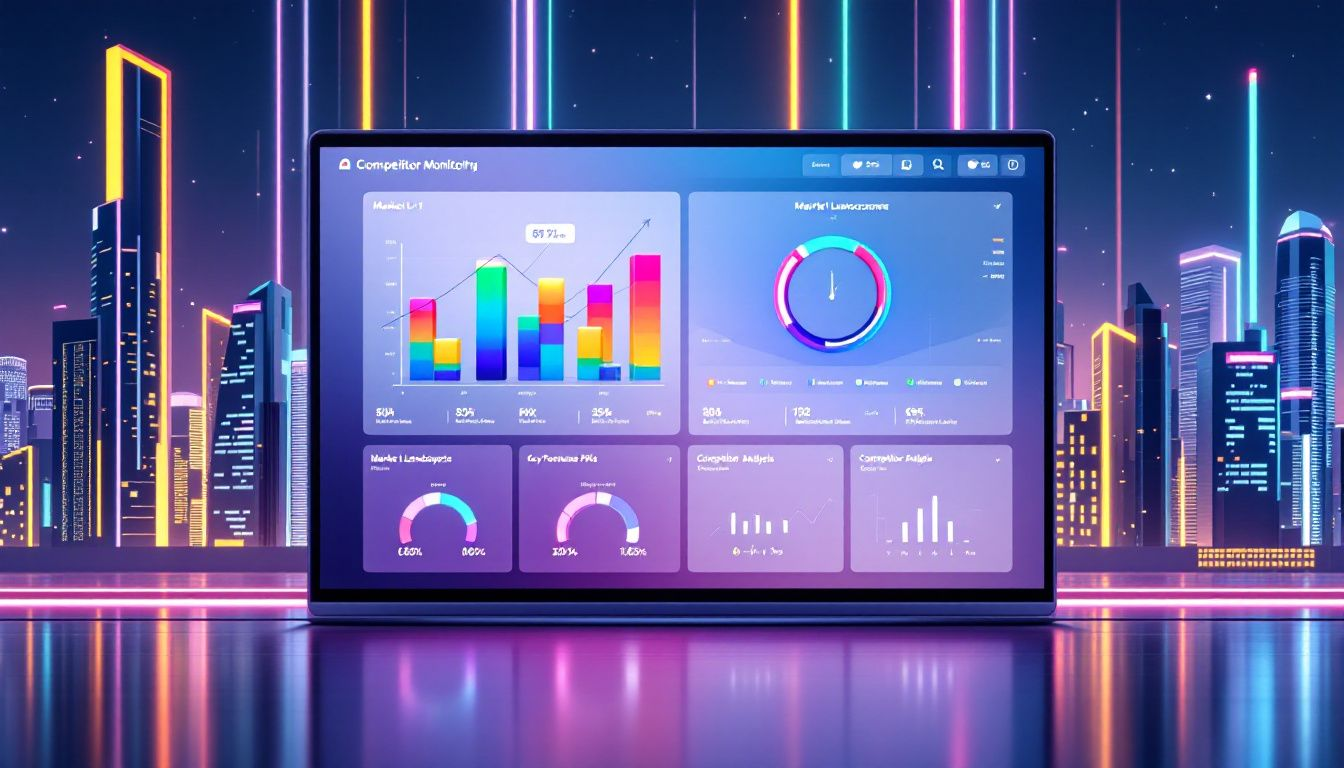
Continuous tracking of competitors is essential for informed business decision-making. Regularly assessing competitors helps identify outdated practices in your own strategy. Regularly tracking competitors’ engagement metrics can reveal shifts in customer behavior and inform your own strategies. Understanding competitors’ failures can guide businesses in making more informed strategic choices. Effective competitor tracking requires both automated tools and strategic manual research to gather insightful data.
This section covers best practices for effective competitor monitoring, including regularly updating data, focusing on relevant competitors, and sharing insights across teams. By following these practices, businesses can ensure they are making the most of the competitive intelligence gathered.
Regularly Update Your Data
Demonstrating the value of regular updates helps in protecting and growing revenue. Cultivating a data-driven culture is supported by sharing evidence of how competitor intelligence is utilized and its resulting impact. Regularly updating competitive intelligence data is essential for responding to market changes effectively.
Updated intelligence allows for timely decision-making, ensuring your business remains competitive.
Focus on Relevant Competitors
Identifying both direct and indirect competitors is crucial for a comprehensive competitive analysis. Gathering detailed data about competitors’ strengths, weaknesses, and market dynamics provides valuable insights for strategic positioning. Regularly analyzing competitors helps a business stay informed about changes in market trends and consumer preferences.
Assessing competitors’ marketing strategies reveals effective channels and tactics that can be adapted for one’s own campaigns. Conducting a SWOT analysis aids in visualizing how your business stands against relevant competitors and informs strategic decisions.
Share Insights Across Teams
Organizations should design clear responsibilities and feedback loops to effectively utilize insights gained from competitor monitoring. Responsibility clarity ensures that all teams, including sales and marketing, understand their roles in relation to the insights shared.
Implementing feedback systems allows teams to discuss and refine their strategies based on the competitor insights received.
Tools to Automate Competitor Monitoring
Competitor monitoring tools automate tracking of critical changes in the competitive landscape. Combining automated tracking with manual research techniques can enhance competitor monitoring. Automated price monitoring tools can analyze pricing changes quickly, saving time compared to manual methods. Effective price monitoring tools can alert businesses about competitor promotions or price drops instantly.
Klue tracks website changes, reviews, product launches, and social media mentions. BuzzSumo allows you to monitor competitors’ share of voice on topics and set up alerts for new content. BuzzSumo is used for analyzing top-performing content for relevant topics, including engagement on social sites.
Owletter sends a monthly summary of competitors’ emails to keep businesses informed. Owler curates data from startups relevant to your niche, which helps in understanding the competitor landscape. Klue uses AI to analyze data collected during competitor monitoring and surface relevant insights.
Using a platform with human analysis saves time and leads to faster decision-making in competitor monitoring. Klue measures the effectiveness of competitive content by assessing its impact on revenue and sales cycle length. Klue can create competitor profiles, plan marketing campaigns, and assess content impact from collected competitive data.
Comprehensive Monitoring Platforms
Comprehensive platforms can automate the gathering of competitor data and insights, streamlining the analysis process. Companies should focus on insights that will drive real action when leveraging competitive monitoring tools. A key feature to look for in competitor monitoring tools is integration with the existing tech stack.
Klue’s AI summary filtering feature filters out irrelevant and extra information. Visualping can track changes to competitor websites and sends alerts when changes occur. AdClarity provides comprehensive analysis of advertisements across various channels, performance benchmarking, and competitor campaign evaluation. The data coverage of AdClarity encompasses 650,000 publishers and 51 markets for a broad view of advertising strategies.
Brand24 allows for easy monitoring of brand mentions with a mentions feed for easy review and engagement. Using these comprehensive platforms enables companies to stay ahead by efficiently tracking competitors’ activities and responding to market changes.
Specialized Tools for Specific Needs
BuiltWith and Wappalyzer are essential tools that reveal competitors’ tech stacks. The best time to check a competitor’s tech stack is after major site updates to understand their latest strategies.
Buzzsumo helps identify content topics by showcasing what types of content engage audiences across competing websites. Buzzsumo provides performance details showing how different types of content perform, allowing businesses to strategize effectively.
Summary
In today’s highly competitive business environment, staying ahead requires more than just understanding your own strengths and weaknesses. It involves a thorough and ongoing analysis of your competitors. By employing the strategies outlined in this guide, including both manual methods and advanced tools, businesses can gain the most relevant competitive insights and make data-driven decisions.
Competitor monitoring is not a one-time task but a continuous process that evolves with the market. Regularly updating your data, focusing on relevant competitors, and sharing insights across teams will ensure your business remains agile and competitive. Embrace these strategies to not only keep pace with your competitors but to outmaneuver them and achieve sustained business growth.
Frequently Asked Questions
Why is competitor monitoring important for my business?
Competitor monitoring is crucial for staying ahead in the market, as it enables you to quickly adapt to changes and seize new opportunities. By understanding your rivals, you can refine your strategies and maintain a strong competitive edge!
What are some manual methods for monitoring competitors?
To effectively monitor your competitors, leverage keyword research to uncover their target keywords, scrutinize online reviews for insights into their performance, and set up Google Alerts to stay updated on their latest activities. By staying vigilant and informed, you can sharpen your competitive edge!
How can competitor monitoring tools enhance my marketing strategies?
Competitor monitoring tools can significantly enhance your marketing strategies by providing crucial insights into your competitors' tactics, allowing you to optimize your own efforts for better performance. Leverage this information to make informed decisions and stay ahead in the competitive landscape!
What are the benefits of tracking competitor prices and product developments?
Tracking competitor prices and product developments keeps your business agile and competitive, enabling you to adjust pricing strategies effectively and align your offerings with market demand. Stay ahead of the game and seize growth opportunities by staying informed!
How can I ensure effective competitor monitoring?
Effective competitor monitoring requires you to regularly update your data and focus on both direct and indirect competitors. By sharing insights across teams, you can make informed decisions and create cohesive strategies that propel your business forward!
